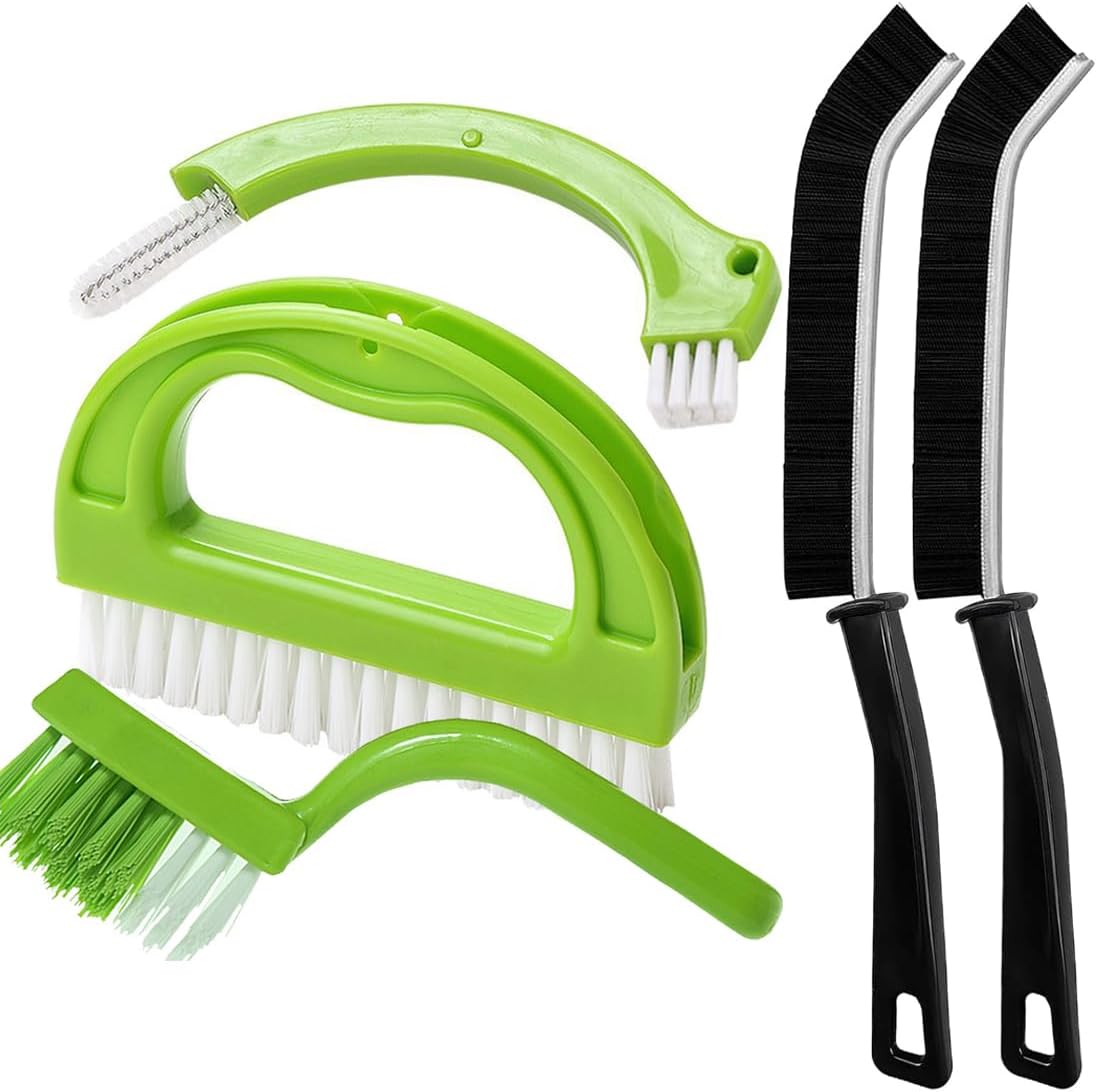Understanding the Critical Health Risks Associated with Heatwaves
Heatwaves are not simply seasonal fluctuations; they pose substantial dangers to human health and societal stability. Gaining insight into the complex dynamics of heatwaves is essential for effectively managing extreme heat conditions. When temperatures soar significantly beyond the seasonal norms, it becomes crucial to elevate public awareness and formulate preparedness strategies, particularly in regions that are increasingly vulnerable to these severe weather events.
Assessing the Detrimental Effects of High Temperatures on Health

Extreme heat is characterized by temperatures that significantly surpass average levels, often exceeding 30°C (86°F) in many locales. Regions such as the Middle East and parts of Australia experience even higher extremes. The World Health Organisation defines heatwaves as extended periods of excessive heat lasting several days, which can be particularly perilous for vulnerable populations, including the elderly, children, and those with pre-existing medical conditions. As urban areas grow, the heat island effect—where cities absorb and re-emit heat—intensifies these risks, underscoring the need for public education on recognizing heat-related ailments and implementing protective measures.
Understanding the health risks tied to extreme heat is crucial for everyone. Conditions like heat exhaustion, heat cramps, and heat stroke can develop rapidly when the body struggles to maintain its temperature. Symptoms may include heavy sweating, severe fatigue, confusion, and episodes of fainting. For those committed to surviving extreme heat, early identification of these symptoms can be pivotal in managing the situation effectively and avoiding medical emergencies.
Delving into the Contributing Factors Behind Heatwaves
The emergence of heatwaves is often linked to high-pressure systems that trap warm air near the Earth's surface. Global climatic phenomena, such as El Niño and La Niña, play a significant role in these events, disrupting typical weather patterns worldwide. By grasping these scientific principles, individuals can better anticipate the onset of heatwave patterns, thereby enhancing their preparedness and response strategies.
Research indicates that climate change is driving an increase in both the frequency and severity of heatwaves globally. Studies reveal that as global temperatures rise, the likelihood of extreme heat occurrences will also escalate. With regions from Europe to North America facing unprecedented summer heat, communities must adapt by implementing innovative strategies to alleviate the impacts of these increasingly frequent heatwaves.
To improve forecasting capabilities, local authorities and meteorological organizations are increasingly adopting advanced technologies. State-of-the-art weather models can provide timely alerts and updates, empowering communities to take proactive steps. Staying informed about impending heatwave conditions allows individuals to adopt preventative strategies, such as avoiding outdoor activities during peak heat hours and ensuring adequate hydration.
Proactive Strategies for Anticipating and Preparing for Heatwaves
In our information-rich society, staying updated with weather forecasts has never been easier. Numerous applications and websites provide detailed meteorological predictions, including heatwave alerts that help guide daily activities. For instance, mobile apps can send notifications when temperatures begin to rise, enabling individuals to adjust their plans and enhance their safety.
Preparation goes beyond just monitoring forecasts; it requires a deep understanding of personal and community resilience. Communities can enhance their readiness by establishing cooling centers and promoting public awareness about the dangers associated with heatwaves. Schools, workplaces, and local government entities play crucial roles in disseminating vital information and resources aimed at addressing the threats posed by extreme heat.
On an individual level, people can empower themselves by creating a personal action plan. This plan should include strategies for staying cool, identifying local swimming pools or air-conditioned spaces, and knowing when to seek medical help. Additionally, understanding how heat affects the body can enable individuals to manage associated risks more effectively.
Understanding the Broad Impact of Heatwaves on Healthcare Systems and Communities

The repercussions of heatwaves extend well beyond individual discomfort; they exert significant pressure on public health systems. In various regions, heatwaves have been directly linked to rising mortality rates. During peak heat periods, emergency departments often experience a surge in patients suffering from heat-related conditions, overwhelming healthcare resources and necessitating immediate action.
On a societal level, heatwaves disrupt community activities and critical infrastructure. Elevated temperatures can lead to power outages due to increased demand for air conditioning, further complicating challenges for already vulnerable populations. Public transport systems may falter under extreme heat, leaving individuals stranded and exacerbating isolation for those without access to private transportation.
Moreover, the psychological toll of enduring extreme heat is considerable. The stress associated with heat exposure can elevate anxiety and irritability levels, potentially impacting social cohesion within communities. In regions that regularly experience heatwaves, these cumulative effects can shift community dynamics, leading to increased tension and dissatisfaction among residents.
As we explore the complexities of surviving extreme heat, it becomes evident that a collective effort—rooted in awareness, preparedness, and resilience—is essential. Each individual, community, and governmental body plays a crucial role in mitigating the impacts of this escalating challenge.
Crucial Hydration Techniques for Thriving in High Temperatures
As the mercury rises and the sun blazes down, the importance of maintaining proper hydration becomes paramount. Adequate hydration is fundamental to health and well-being during periods of extreme heat. As we delve into effective hydration strategies, the necessity to stay ahead of the curve is clear for those dedicated to surviving extreme heat.
The Vital Role of Hydration in Hot Weather Conditions
Dehydration can set in rapidly in high-temperature environments, often without individuals being aware. The human body comprises approximately 60% water, a crucial fluid for regulating body temperature, lubricating joints, and transporting nutrients. During extreme heat, the body loses water swiftly through perspiration as it struggles to cool itself, necessitating immediate and continuous replenishment to maintain optimal functioning.
Furthermore, staying hydrated is crucial for both cognitive function and physical performance, both of which can decline under heat stress. Even mild dehydration can lead to fatigue, headaches, and diminished attention span, making it essential to establish a consistent fluid intake routine. Research suggests that individuals who remain well-hydrated during heatwaves report fewer heat-related illnesses and are better equipped to cope with extreme conditions.
Moreover, hydration extends beyond simply drinking water. Recognizing the importance of fluid balance, including electrolytes, is vital. When sweating, essential minerals such as sodium, potassium, and magnesium are lost along with water, creating an imbalance that can lead to complications if not adequately addressed.
Choosing the Best Fluids for Optimal Hydration

While water remains the most critical fluid for hydration, not all beverages are created equal. During especially hot days, incorporating sports drinks or electrolyte solutions can be beneficial, as they help replenish lost minerals. These beverages also provide a quick energy source, making them ideal for individuals engaged in prolonged outdoor activities.
Coconut water is an excellent alternative, rich in natural electrolytes and hydration benefits. Its refreshing taste provides a delightful change from plain water, encouraging increased fluid intake. Additionally, herbal teas, infused waters, and broths can contribute to overall hydration while catering to varying taste preferences.
However, certain beverages should be consumed cautiously. Caffeinated drinks and alcohol can contribute to dehydration, counteracting hydration efforts. It’s wise to limit these beverages, particularly during heatwaves, as they can exacerbate the body’s struggle to maintain fluid balance.
Creating a Hydration Schedule for Success
Developing a hydration schedule is an effective approach to ensuring adequate fluid intake. Aim to drink water regularly throughout the day, rather than waiting until thirst strikes. A general guideline suggests consuming at least two liters of water daily under normal conditions, with increased emphasis on hydration during heatwaves.
Consider integrating hydration into your daily routine by setting reminders on your phone or using apps designed to track water consumption. Additionally, carrying a reusable water bottle ensures easy access to hydration wherever you go, promoting regular fluid intake.
Adjusting your hydration strategy based on activity levels and environmental conditions is also essential. If engaging in vigorous physical activity or spending extended periods outdoors, increase your fluid intake accordingly. Furthermore, factoring in temperature and humidity levels is vital; higher humidity can lead to increased sweating, necessitating careful hydration management.
Incorporating hydrating foods into your diet can further enhance overall fluid intake. Water-rich fruits and vegetables, such as cucumbers, watermelon, and oranges, not only help hydrate but also provide essential nutrients that promote overall health and vitality.
The mantra for hydration during extreme heat should be proactive rather than reactive. By prioritizing hydration, you can better equip yourself to face the challenges of surviving extreme heat.
Selecting the Right Clothing and Accessories for Heat Resilience
When faced with extreme heat, choosing appropriate clothing and accessories is crucial for maintaining comfort and safety. Making informed decisions about attire can significantly enhance one’s ability to cope with soaring temperatures, whether navigating busy urban environments or enjoying outdoor activities.
Opting for Fabrics That Promote Breathability and Comfort
The choice of fabrics can greatly influence your comfort level in combating heat. Lightweight, breathable materials like cotton, linen, and moisture-wicking synthetics are ideal for keeping your body cool. These fabrics facilitate airflow and help wick sweat away from the skin, promoting evaporation and the natural cooling processes essential during extreme heat.
Conversely, heavier materials like polyester or denim can trap heat and moisture, resulting in discomfort and an elevated risk of heat-related illnesses. When selecting clothing for hot weather, opt for loose-fitting designs that allow ample room for air circulation. Tight clothing can restrict movement and retain heat, creating a stifling effect that should be avoided at all costs.
For outdoor adventures, consider garments specifically designed for sun protection. Many brands now offer clothing with UV protection factors, shielding your skin from harmful rays while ensuring comfort. Incorporating such items into your wardrobe is a proactive measure that can significantly reduce the risk of sunburn and long-term skin damage.
Understanding the Influence of Color and Style on Heat Management
The colors you choose to wear can significantly impact your body’s response to heat. Light colors, such as white, beige, and pastel shades, reflect sunlight, helping to keep your body cooler. In contrast, dark colors absorb heat, increasing discomfort during extreme temperatures.
Regarding style, loose-fitting clothing enhances comfort and allows for better airflow, which is crucial when striving to survive extreme heat. Ventilated garments, such as those with mesh panels or open weaves, can further support cooling and improve overall comfort.
Carefully chosen accessories are also vital for effectively combating heat. Wide-brimmed hats offer essential shade for your face and neck, which are sensitive areas prone to overheating. UV-protective sunglasses shield your eyes from intense sunlight while allowing you to navigate outdoor spaces more comfortably.
Key Accessories for Optimal Heat Protection and Comfort
Accessories should not be neglected when preparing for extreme heat. A high-quality hat is essential; look for options made from breathable materials that offer adequate ventilation while shielding your face from direct sunlight.
Sunglasses are another crucial accessory. They protect your eyes from harmful UV rays and reduce glare, enhancing visibility in bright conditions. Opt for sunglasses that provide 100% UV protection to safeguard against potential eye damage.
An umbrella can serve dual purposes: providing shade during outdoor activities and shielding against unexpected rain showers. Lightweight, portable options are available that are easy to carry and set up, making them an excellent addition to your heat survival toolkit.
Cooling towels or bandanas can also be invaluable during extreme heat. These accessories can be soaked in cold water and worn around your neck or forehead for instant relief from the heat. As they evaporate, they draw heat away from your body, providing a straightforward yet effective cooling solution.
As you prepare for the heat, remember that every detail matters. Thoughtfully selecting clothing and accessories designed for temperature management can significantly enhance your comfort and resilience in extreme heat.
Innovative Cooling Techniques for Coping with Extreme Heat
In the relentless grip of extreme heat, cooling techniques become vital tools for survival. Exploring these methods—from home solutions to personal strategies—can greatly enhance your comfort and safety, enabling you to effectively withstand extreme heat.
Proven Home Cooling Techniques for Enhanced Comfort
Creating a comfortable indoor environment during heatwaves is crucial. Simple home cooling strategies can significantly affect maintaining a livable space. Start by using fans strategically to improve air circulation. Ceiling fans should rotate counter-clockwise to create a wind-chill effect, effectively cooling the air. Portable fans can also be positioned near windows to draw in cooler air during the evening and night.
Consider closing blinds or curtains during the day to block direct sunlight, which can dramatically increase indoor temperatures. Blackout curtains or reflective window films are particularly effective in keeping homes cool. If nighttime temperatures drop, open windows to allow cooler air to flow through, creating a refreshing cross-breeze that enhances comfort.
Air conditioning remains one of the most effective methods for combating extreme heat. If you have access to air conditioning, ensure it is well-maintained and set to a comfortable temperature. Portable air conditioners or window units can provide targeted cooling in key areas if central air conditioning is not available.
Additionally, consider employing natural cooling techniques, such as placing bowls of ice in front of fans to create a makeshift air conditioner. This DIY method can enhance airflow in a room while delivering a refreshing chill that helps counteract the heat.
Personal Cooling Strategies for Outdoor Comfort and Safety
When venturing outdoors, personal cooling strategies are essential for surviving extreme heat. Taking cool showers or baths can help lower your body temperature and provide immediate relief. If a full shower isn't feasible, damp cloths or cooling wipes applied to pulse points like the wrists, neck, and behind the ears can efficiently cool you down.
Cooling vests are another innovative solution for outdoor workers or individuals who must remain active in high temperatures. These vests feature pockets filled with gel packs or ice, offering significant cooling effects while allowing for essential mobility.
Choosing appropriate clothing can also support personal cooling efforts. As previously discussed, opt for lightweight, breathable fabrics in light colors. Additionally, consider using arm or leg sleeves designed for UV protection and cooling, providing an extra layer of defense against heat exposure.
Listening to your body during extreme heat is essential. If you begin to feel overheated, seek shade, take breaks, and prioritize hydration. Recognizing when to step back and cool down is key to preventing the escalation of heat-related illnesses.
Outdoor Cooling Strategies for Enjoyable Summer Activities
Outdoor cooling techniques are essential for those partaking in summer activities. Seeking shade from trees or structures is a simple yet effective way to reduce heat exposure. Many parks and recreational areas provide shaded benches or pavilions where individuals can rest and cool down.
Misting systems are becoming increasingly popular in outdoor venues. These systems release fine water droplets into the air, creating a refreshing cooling effect. Many public spaces, including amusement parks and outdoor markets, now feature misting stations to help visitors effectively cope with the heat.
Using cooling towels or bandanas while outdoors can provide immediate relief. Soak the towel in water, wring it out, and place it around your neck. The evaporative cooling effect will help regulate your body temperature, making outdoor activities more enjoyable and manageable.
Additionally, portable fans or battery-operated cooling devices for outdoor use should be considered. These gadgets can create a personal breeze, offering relief from oppressive heat while remaining compact and easy to carry, ensuring comfort throughout your outdoor experiences.
Overall, outdoor cooling techniques empower individuals to enjoy summer adventures while minimizing the risks associated with extreme heat. By proactively addressing cooling needs, you can embrace the season without fear of heat-related challenges.
Advancements in Cooling Technology for Effective Heat Management
The evolution of cooling technology has introduced innovative solutions for effectively managing heat. Portable air conditioners have become more accessible than ever, providing powerful cooling options for spaces lacking central air. These devices can be effortlessly moved from room to room, ensuring comfort wherever you are.
Smart thermostats have revolutionized indoor temperature management. These devices learn your preferences and adjust settings accordingly, optimizing energy use while keeping your environment cool. Many models can be controlled remotely via smartphones, allowing adjustments even when you're away from home.
Evaporative coolers, also known as swamp coolers, offer an eco-friendly cooling solution. They work by drawing warm air through water-saturated pads, resulting in cool, moist air entering your living space. These units are particularly effective in dry climates and can be a cost-effective alternative to traditional air conditioning.
Innovative outdoor cooling solutions, such as patio misting systems, can enhance comfort in outdoor settings. These systems utilize high-pressure pumps to create a fine mist that cools the air outdoors, making them ideal for gatherings or relaxation even during the hottest days.
As global temperatures rise, investing in cooling technology can greatly enhance your comfort and safety during extreme heat. Embrace these innovations to better prepare yourself for the challenges that lie ahead.
Dietary Modifications for Enhanced Hydration and Energy Management
As temperatures climb, adjusting your diet becomes crucial for surviving extreme heat. The foods we consume play a vital role in hydration and energy levels, directly influencing our ability to navigate the sweltering months ahead with ease and comfort.
Top Hydrating Foods to Incorporate During Heatwaves
When the heat intensifies, focusing on water-rich foods can significantly bolster hydration efforts. Foods like cucumbers, tomatoes, watermelon, and oranges boast high water content and serve as refreshing options that help keep your body properly hydrated. Including these items in your meals not only aids hydration but also provides essential vitamins and minerals that support overall health and vitality.
Salads filled with crisp vegetables offer a light, nutritious choice that is easy to prepare and consume during hot weather. Adding lean proteins, such as grilled chicken or legumes, can create balanced meals that provide energy without overwhelming your digestive system.
Smoothies represent another excellent way to stay hydrated and nourish your body. Blend your favorite fruits with yogurt or almond milk for a refreshing, hydrating, and energizing drink. You can also incorporate spinach or kale for an extra nutrient boost while keeping the drink light and enjoyable.
Maintaining a diverse diet focused on hydration can also help prevent heat-related illnesses. Nutrient-dense foods provide the sustenance necessary to cope with physical activity, allowing you to remain active even in high temperatures.
Foods to Limit During Extreme Heat Conditions
While some foods encourage hydration, others should be limited during extreme heat. Heavy, high-protein meals, such as red meat or rich pasta dishes, can generate metabolic heat, leaving you feeling sluggish and uncomfortable. It is advisable to avoid these options in favor of lighter fare that is easier to digest and more suitable for hot weather.
Moreover, spicy foods can lead to increased sweating, which may not be desirable when trying to stay cool. While some individuals enjoy spicy dishes, moderation is critical during heatwaves to prevent exacerbating discomfort and potential heat-related issues.
Alcohol and caffeinated beverages can also undermine hydration efforts. Both substances act as diuretics, promoting water loss. Limiting these drinks can support your overall hydration strategy and help reduce the risk of dehydration during high temperatures.
Meal Planning Techniques for Success During Hot Weather
Thoughtful meal planning can greatly influence how you navigate extreme heat. Focus on preparing dishes that are quick to make and require minimal cooking, as using the oven or stove can uncomfortably raise indoor temperatures.
Consider batch cooking on cooler days and storing meals in the refrigerator or freezer for quick access. This strategy not only saves time but also ensures that nutritious options are readily available, reducing the temptation to opt for unhealthy snacks or take-out meals when the heat is on.
When designing your meal plan, include a variety of hydration-focused foods. Experiment with refreshing salads, chilled soups, and light pasta dishes that incorporate seasonal vegetables. The key is to strike a balance between nutrition and hydration, ensuring your body receives the necessary support during heatwaves.
Ultimately, being mindful of your dietary choices in extreme heat can enhance your ability to stay calm and healthy. A thoughtful approach to nutritional adjustments can significantly improve your experience during the hottest months of the year.
Strategically Managing Activities During Extreme Heat
Effectively managing activities during extreme heat is crucial for health and safety. Understanding how to modify routines and exercise safely can significantly contribute to surviving extreme heat and enjoying the summer without unnecessary risk.













